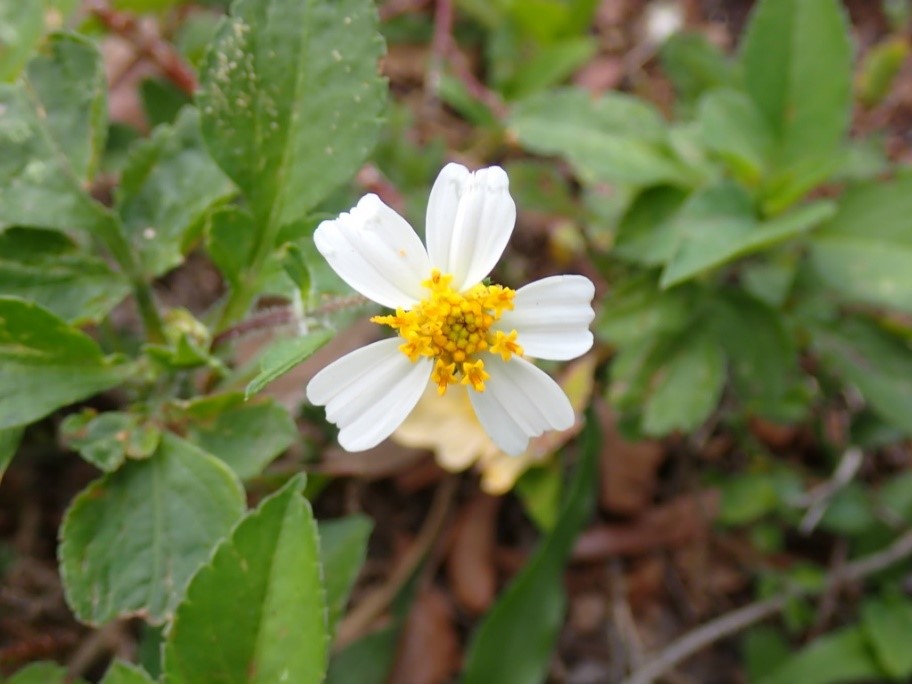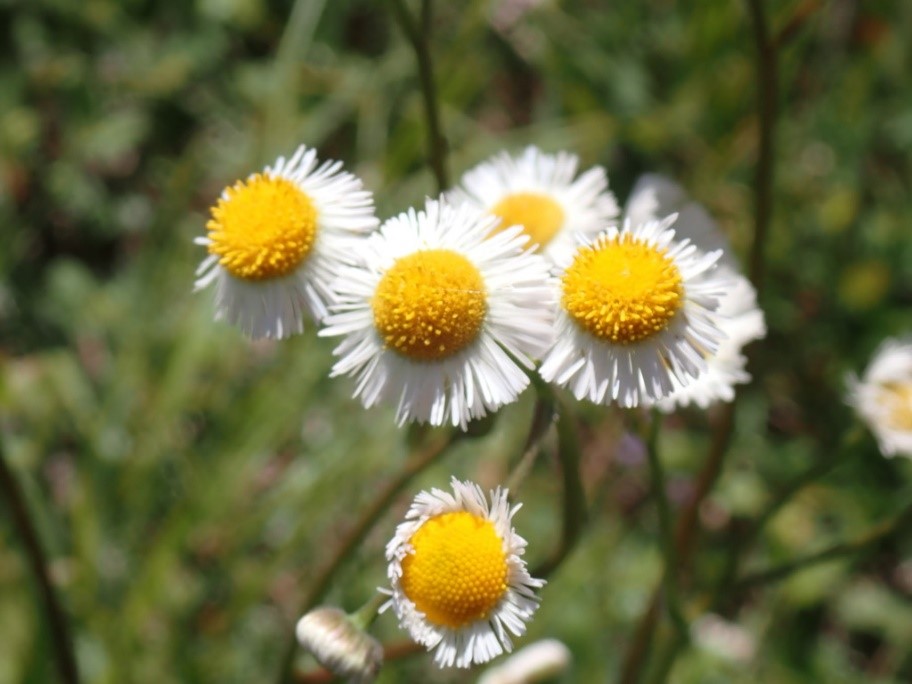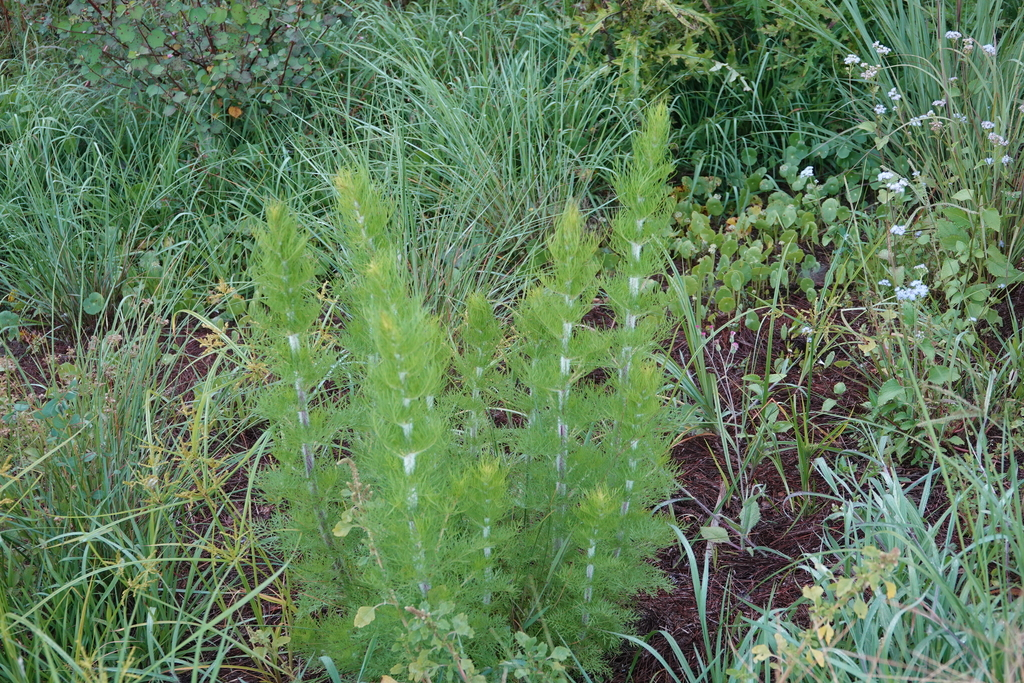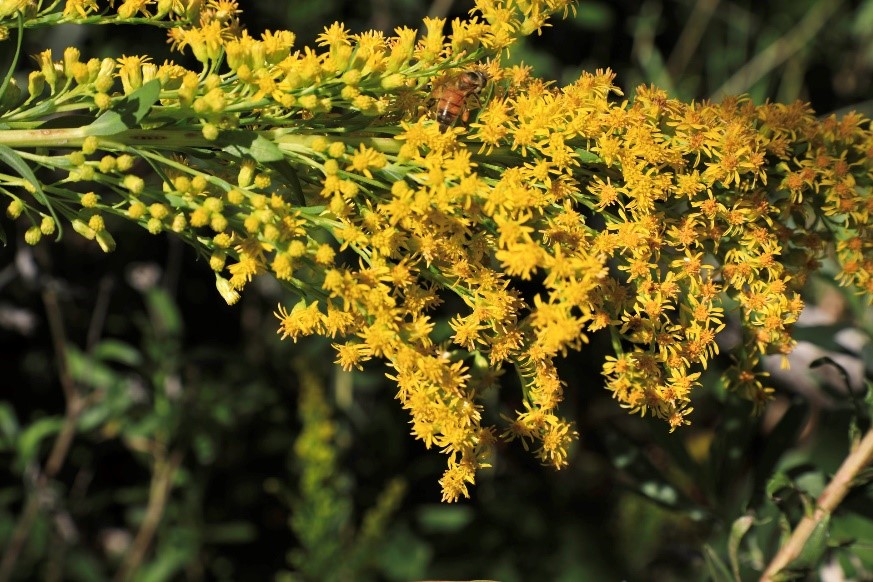Florida has the climate to host a variety of subtropical to tropical exotic plants. Many landscapes are rich in non-native species that are beautiful but high maintenance, subject to pests, and need special fertilizers and soils to grow. While such plants may be trendy, they are not beneficial to our local ecology. Native plants occurred in the state before human alterations- they belong here- and are a part of our history, heritage, and unique climate and should be a primary consideration in our landscapes.
Native plants in the Asteraceae are abundant to our soils and help sustain a variety of insects, plants, and wildlife that are essential to our food production and biodiversity. Such flowering species can be regarded as weeds but should be seen otherwise – as beneficial collections of plants that feed birds, and insects, and contribute to our topography, climate, and soil health. Such species as – Bidens alba, Erigeron quercifolius, Eupatorium capillifolium, and Solidago sempervirens should be a part of our landscapes and are powerful examples of sustainability requiring little to no irrigation, fertilizers, or pesticides.
Bidens alba (Beggarticks) produces prolifically and is the most underappreciated of all Florida’s native wildflowers. It is the third most common source of nectar for bees in our state and a favorite food source for a myriad of butterflies including the larval host plant for the dainty sulphur butterfly. The young leaves and flowers are edible, and the seeds have barbs which stick to clothing and pet fur. This plant can seem a bit invasive in the landscape because it reseeds itself at such a fast pace but if it is thinned and controlled to a selection of areas, the bees and butterflies will thank you.

Photo Credit: Sean Patton

Photo Credit: Sean Patton
Erigeron quercifolius (oakleaf fleabane) is a short-lived perennial wildflower that blooms in the spring and summer. It occurs on sandhills, moist hammocks, and disturbed sites where the soil varies from dry and sandy, to moist. It is best utilized in open sunny areas and is a friend to bees and is the nectar plant for Erynnis zarucco (zarucco duskywing) butterflies. It can easily be propagated by seed but will tend to get weedy if left unattended.
Eupatorium capillifolium (dogfennel) is an herbaceous perennial weed in the Asteraceae family that is commonly regarded as a noxious weed because of how rapid it can spread in the landscape. Dogfennel is native to fields, wetlands, woodland margins, and disturbed sites from Florida to the coast of Massachusetts. It grows 3-6 ft. tall on a direct slender stem and has fine dissected leaves that appear feathery that are also aromatic when crushed. However, dogfennel is not for consumption and is poisonous. The flowers are small, white to lavender and yellow, and are organized into larger heads resembling a single symmetrical flower cupped by a ring of green bracts that bloom late summer into fall.

Photo Credit: Claire Herzog

Photo Credit: Sandra Robinson
Solidago sempervirens (seaside goldenrod) is a perennial found in coastal marshes, wetlands, beaches, and some upland habitats. The waxy, fleshy narrow leaves form a tight clump at the base of the 2–8-foot erect flower stalk where its golden-yellow blooms cluster at the terminal end. Goldenrod is a minimal maintenance native that makes a terrific addition to pollinator gardens and ornamental flower beds. It is salt, drought, and flood tolerant – needing little to no water or fertilizer – making it the perfect Florida ornamental. It spreads readily by seed and blooms late in the summer. Once it is finished blooming cut the stem back down to the ground as it will not produce flowers again on that same stem.
There are many more enchanting native asters found in Sarasota-Manatee Counties that would be beneficial to pollinators in your backyard. If you are curious to learn more, please join our iNaturalist project Asters All Around to see what citizen scientists have documented so far and join the project to add observations of your own! EcoFlora Sarasota Manatee will also be holding our monthly BioBlitz in October 27 from 9 a.m. – noon at Curry Creek Preserve and October 29 from 9 a.m. – noon at Little Manatee Southfork tract. If you would like to join us, please register with the links provided and we will follow up with further information. Happy planting!
Curry Creek Preserve BioBlitz Registration
Little Manatee Southfork Tract BioBlitz Registration
